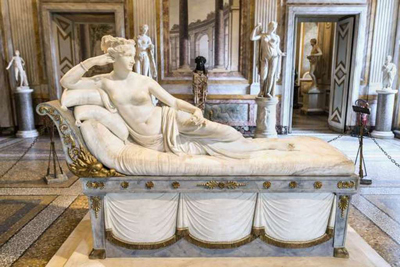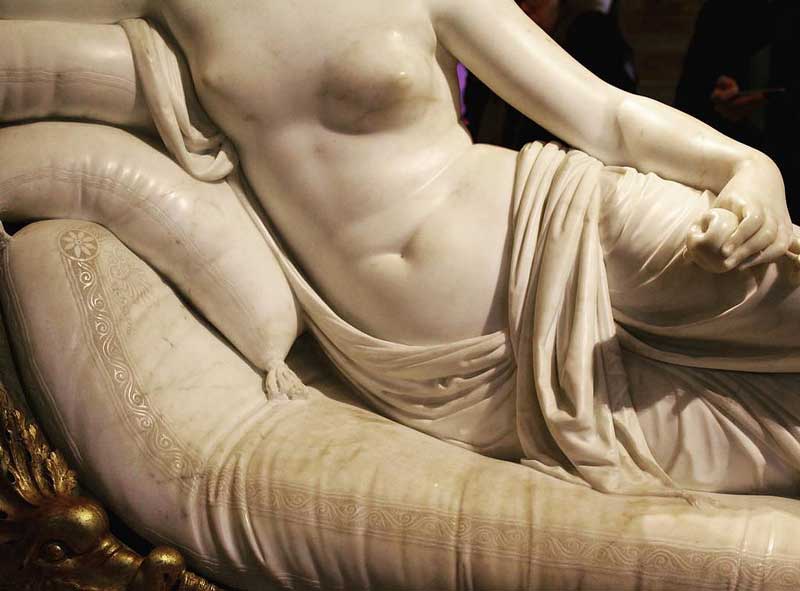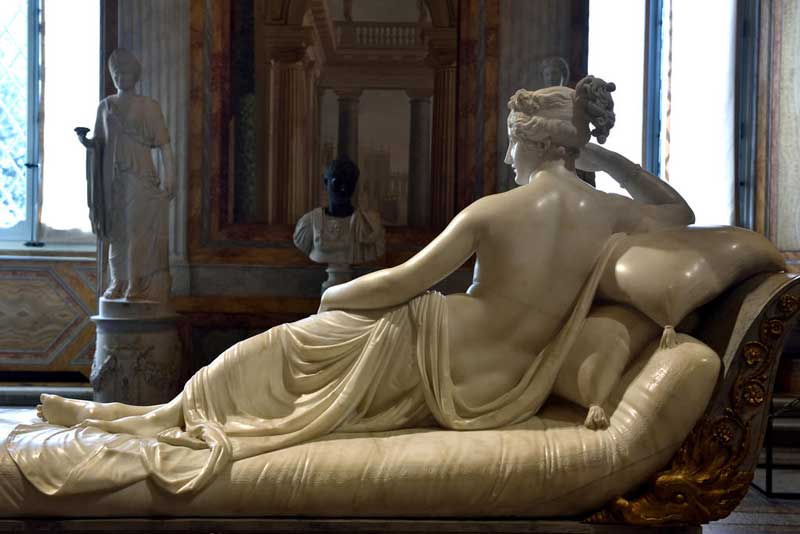
Venus Victrix, also known as Venus Victorious, is a semi-nude reclining life-size sculpture by the Italian sculptor Antonio Canova, which was commissioned by Camillo Borghese, the second husband of Napoleon Bonaparte’s wayward sister Pauline. It was executed in Rome from 1805 to 1808, shortly after their marriage in 1804, which was designed as a step to materialise Napoleon’s dream of establishing a pan-European dynasty and legitimize his claims to the Kingdom of Italy. After completion, the neo-Classical portrait sculpture was initially moved to Camillo's palace in Turin, then to Genoa and finally housed as an exhibit in the Galleria in Rome around 1838.

In reality, Canova was initially commissioned to depict Pauline fully clothed as Diana, the chaste goddess of the moon and the hunt, a role that would require her to be clothed. However, Pauline had a reputation for promiscuity and she insisted on Venus, the goddess of love, sex and beauty, as she probably liked to enjoy the controversy of posing naked, which would certainly raise a few eyebrows in the polite society.

However, the choice not only suited the flirtatious character of Pauline, but it definitely had the approval of the Borghese family, who believed themselves to be the descended from Aeneas, the heroic founder of Rome and according to Virgil, the son of Venus. The sculpture would suggest the continuity between the ancient and modern worlds. Even, her hair, a mass of curls bound in a Psyche knot, serves as a visual connector between the ancient Greek styles, as well as the fashion during the days of Pauline and its meticulous articulation beautifully balanced the smooth shallow planes of her torso.

In Venus Victrix , the goddess is depicted by Antonio Canova as gracefully reclining on a pillowed couch. The fingers of her right hand placed lightly on the nape of her neck, offer a gesture charged with seductive promise. In her left hand she holds the apple of discord, which was awarded to her by the Trojan prince Paris, in perhaps the first beauty competition in the history of Western culture, when she was adjudged more beautiful than either of her rivals, Juno and Minerva (Greek Hera and Athena). Her fingers wrapped around the apple are also suggestive of erotic touch. Her head is slightly raised, as if someone has suddenly entered in her privacy and obstructed her line of vision.

The nude body of the model, created by Antonio Canova, is extraordinarily lifelike, as the surface of the marble captures the soft texture of her skin. In contrast, the couch, on which she lies, is carved from a different type of marble, the base part of which is covered in rhythmically flowing drapery, much like a decorated wooden framework supporting the coffin, called catafalque.

Though Canova’s creation of the naked and impudent French woman had an enormous impact on nineteenth century French artists, it provoked outrage among its Victorian audience for whom it appeared a little too real. However, Paulina probably enjoyed the scandal and public attention and when asked as to how could she pose almost in nude, she famously remarked that there was a stove in the studio which was enough to keep her warm.